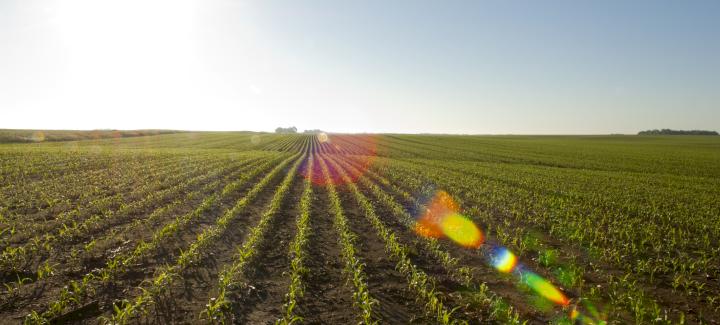Stine® continually seeks ways to improve yields and best management practices for growers in the field, and we’re excited to launch a unique emergence study this spring. This study aims to evaluate corn emergence to demonstrate how uniform emergence impacts ears and yield.
“Our goal is to continue to find ways to improve product evaluation and field placement,” says Tony Lenz, corn technical agronomist. “By using data from the emergence study, we’ll be able to home in on the ideal hybrids and best planting practices that improve overall performance of our seed. It’s part of our agronomy team’s core focus — to find the most effective ways for growers to achieve yields above growers' expectations.”
Protocols and data collection
Our Stine agronomists plan is to implement the emergence study in each of our 36 regions nationwide. This wide area approach allows us to examine how different products emerge in different environments. Our agronomy team’s intention with this study is to look at how our latest products perform — the hybrids that are either brand new to the marketplace or released in the last few years. And our sales team’s primary focus is to check emergence and performance through side-by-side comparisons with competitor products. This will allow us to showcase better how Stine genetics result in fast starts and even emergence.
For each study, our agronomists and sales reps in the field will measure 1/1,000 of an acre within two rows next to each other. Different colored flags will be used to mark the different stages (days) of emergence. This will take a great deal of due diligence as our team will monitor and identify soil breaks, plant spikes, stand counts, and plant height each day before and for four consecutive days after emergence has been noted. We need to be there four days in a row at the same time every day as even a delayed emergence of 24 hours can harm yield.
Emergence study plots will be monitored frequently throughout the growing season and will again be examined before and after harvest to determine ear development, as well as tassel, top leaf and ear heights.
“What differentiates this emergence study from others in the industry is that we’re taking our research and data to the next level by recording ear, grain and cob weight according to emergence and yield results,” says Lenz.
The data we collect from this study will help determine specific hybrid performance by population, singulation and planting depth, as well as any inputs or treatments applied. We’ll also have side-by-side comparisons with competitor products to evaluate performance.
“We’re proud of the fast starts and excellent emergence that come with Stine genetics,” says Tom Larson, corn technical agronomist. “This study will provide us with additional data to showcase our products’ proven performance. In addition, it will allow growers to see how each hybrid works in different environments and how those environments impact emergence.”
Exploring the value of even emergence
In a recent article by Farm Journal’s Ag Web, agronomic experts highlight the value of uniform plant emergence and its effect on corn yields. The article featured some of the top precision agriculture experts to examine their findings on how accurate seed metering and placement can impact seed performance. The article notes that “While precise seed spacing produces pretty fields, timely emergence of seedlings is a big impact on yields.”
A specific study conducted by Jason Webster, a commercial agronomist with Precision Planting’s Precision Technology Institute, found when they altered a planter to plant at only 95% singulation and compared it to a planter that performed at 99% singulation, the latter did the best job at establishing ideal plant spacing and uniform emergence — a 16.6 bushel/acre difference.
“With corn at $5, that was an $83 per acre difference,” says Webster. “That shows how sensitive corn yields can be to the potential that high-tech planters provide.”
Stine is also exploring this as part of our emergence study, particularly as we look at the new MX Series Corn by Stine line of hybrids and how precision planting can elicit even greater yields.
“MX Series Corn includes the best, most elite hybrids Stine offers,” says Larson. “This is why we’re using these products in our emergence study. We want to test the best genetics with the best planting strategies that incite the best yield results. That’s the corn we want in our bag.
For more information on our emergence study or MX Series Corn by Stine, contact your local Stine sales rep or regional sales agronomist.

